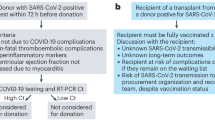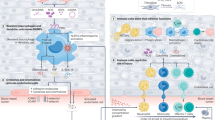Abstract
Heart transplantation has evolved into the treatment of choice for eligible patients with end-stage heart failure. Effective immunosuppression is critical to the success of this treatment, with the modern era beginning with the advent of cyclosporin A in the 1980s. In this Perspectives article, the major prospective, randomized trials of immunosuppression after heart transplantation are briefly reviewed. These trials provided the setting for the 2011 TICTAC trial, in which combined immunosuppression was compared with monotherapy. The results of the study are discussed, as are the implications of these data for future research, including the importance of frameworks, the risks and benefits of changes in immunosuppression regimen, the future of funding for such research, and the selection of appropriate end points in trials of heart transplantation. The presupposed need for multidrug immunosuppression is challenged, and the potential efficacy and benefits of monotherapy are explored.
This is a preview of subscription content, access via your institution
Access options
Subscribe to this journal
Receive 12 print issues and online access
$209.00 per year
only $17.42 per issue
Buy this article
- Purchase on Springer Link
- Instant access to full article PDF
Prices may be subject to local taxes which are calculated during checkout

Similar content being viewed by others
References
Barnard, C. N. The operation. A human cardiac transplant: an interim report of a successful operation performed at Groote Schuur Hospital, Cape Town. S. Afr. Med. J. 41, 1271–1274 (1967).
Lawrence, S. V. Heart transplants: blessing or boondoggle? Forum Med. 3, 441–445 (1980).
Caves, P. K. et al. Percutaneous transvenous endomyocardial biopsy. JAMA 225, 288–291 (1973).
Ridker, A. K. et al. The status of cardiac transplantation, 1975. Circulation 52, 531–539 (1975).
Leaf, A. Sounding board: the MGH trustees say no to heart transplants. N. Engl. J. Med. 302, 1087–1088 (1980).
Halloran, P. F., Lien, J., Aprile, M. & White, N. Preliminary results of a randomized comparison of cyclosporine and Minnesota Antilymphoblast Globulin. Transplant. Proc. 14, 627–630 (1982).
Devineni, R. et al. Cyclosporine in cardiac transplantation. Can. J. Surg. 27, 252–254 (1984).
Stehlik, J. et al. The registry of the International Society for Heart and Lung Transplantation: 29th official adult heart transplant report—2012. J. Heart Lung Transplant. 31, 1052–1064 (2012).
Kobashigawa, J. et al. A randomized active-controlled trial of mycophenolate mofetil in heart transplant recipients. Mycophenolate Mofetil Investigators. Transplantation 66, 507–515 (1998).
Kobashigawa, J. A. et al. Mycophenolate mofetil reduces intimal thickness by intravascular ultrasound after heart transplant: reanalysis of the multicenter trial. Am. J. Transplant. 6, 993–997 (2006).
Eisen, H. J. et al. Everolimus for the prevention of allograft rejection and vasculopathy in cardiac-transplant recipients. N. Engl. J. Med. 349, 847–858 (2003).
Kobashigawa, J. A. et al. Multicenter intravascular ultrasound validation study among heart transplant recipients: outcomes after five years. J. Am. Coll. Cardiol. 45, 1532–1537 (2005).
Kobashigawa, J. A. et al. Tacrolimus with mycophenolate mofetil (MMF) or sirolimus vs. cyclosporine with MMF in cardiac transplant patients: 1-year report. Am. J. Transplant. 6, 1377–1386 (2006).
Grimm, M. et al. Superior prevention of acute rejection by tacrolimus vs. cyclosporine in heart transplant recipients—a large European trial. Am. J. Transplant. 6, 1387–1397 (2006).
Baran, D. A. Induction therapy in cardiac transplantation: when and why? Heart Fail. Clin. 3, 31–41 (2007).
Uber, P. A. & Mehra, M. R. Induction therapy in heart transplantation: is there a role? J. Heart Lung Transplant. 26, 205–209 (2007).
Hershberger, R. E. et al. Daclizumab to prevent rejection after cardiac transplantation. N. Engl. J. Med. 352, 2705–2713 (2005).
Baran, D. A. et al. Tacrolimus in cardiac transplantation: efficacy and safety of a novel dosing protocol. Transplantation 74, 1136–1141 (2002).
Baran, D. A. et al. Tacrolimus monotherapy inadult cardiac transplant recipients: intermediate-term results. J. Heart Lung Transplant. 20, 59–70 (2001).
Lubitz, S. A. et al. Long-term results of tacrolimus monotherapy in cardiac transplant recipients. J. Heart Lung Transplant. 25, 699–706 (2006).
Baran, D. A. et al. Randomized trial of tacrolimus monotherapy: tacrolimus in combination, tacrolimus alone compared (the TICTAC trial). J. Heart Lung Transplant. 26, 992–997 (2007).
Mehra, M. R. et al. An intravascular ultrasound study of the influence of angiotensin-converting enzyme inhibitors and calcium entry blockers on the development of cardiac allograft vasculopathy. Am. J. Cardiol. 75, 853–854 (1995).
Yamani, M. H. et al. Does acute cellular rejection correlate with cardiac allograft vasculopathy? J. Heart Lung Transplant. 23, 272–276 (2004).
Baran, D. A. et al. A prospective, randomized trial of single-drug versus dual-drug immunosuppression in heart transplantation: the tacrolimus in combination, tacrolimus alone compared (TICTAC) trial. Circ. Heart Fail. 4, 129–137 (2011).
Dresske, B. et al. WOFIE stimulates regulatory T cells: a 2-year follow-up of renal transplant recipients. Transplantation 81, 1549–1557 (2006).
Calne, R. Y. et al. Tolerance of porcine renal allografts induced by donor spleen cells and seven days' treatment with cyclosporine. Transplantation 57, 1433–1435 (1994).
Urschel, S. et al. ABO-incompatible heart transplantation in early childhood: an international multicenter study of clinical experiences and limits. J. Heart Lung Transplant. 32, 285–292 (2013).
Becker, T. et al. Patient outcomes in two steroid-free regimens using tacrolimus monotherapy after daclizumab induction and tacrolimus with mycophenolate mofetil in liver transplantation. Transplantation 86, 1689–1694 (2008).
Schneeberger, S. et al. Upper-extremity transplantation using a cell-based protocol to minimize immunosuppression. Ann. Surg. 257, 345–351 (2013).
US Department of Health & Human Sciences: FDA. Important drug information [online], (2009).
Clinical Trials in Organ Transplantation. Approved studies [online], (2013).
Shah, M. R., Starling, R. C., Schwartz Longacre, L. & Mehra, M. R. Heart transplantation research in the next decade—a goal to achieving evidence-based outcomes: National Heart, Lung, and Blood Institute Working Group. J. Am. Coll. Cardiol. 59, 1263–1269 (2012).
Eisen, H. J. et al. Three-year results of a randomized, double-blind, controlled trial of mycophenolate mofetil versus azathioprine in cardiac transplant recipients. J. Heart Lung Transplant. 24, 517–525 (2005).
Kobashigawa, J. et al. Daclizumab is associated with decreased rejection and no increased mortality in cardiac transplant patients receiving MMF, cyclosporine, and corticosteroids. Transplant. Proc. 37, 1333–1339 (2005).
Author information
Authors and Affiliations
Ethics declarations
Competing interests
The author has received grant or research support from Astellas Pharmaceuticals.
Rights and permissions
About this article
Cite this article
Baran, D. New directions in immunosuppression after heart transplantation. Nat Rev Cardiol 10, 422–427 (2013). https://doi.org/10.1038/nrcardio.2013.63
Published:
Issue Date:
DOI: https://doi.org/10.1038/nrcardio.2013.63



